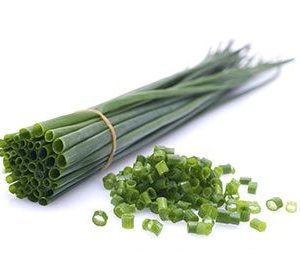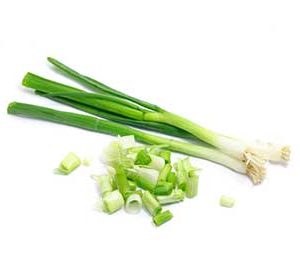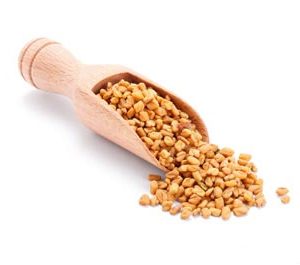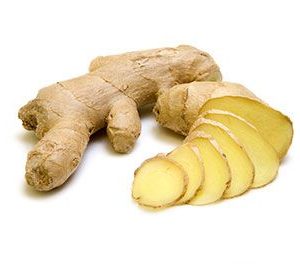Some people only know parsley as an attractive garnish that’s ignored, not eaten. It’s true that parsley is attractive with its small, scalloped leaves, but there’s more to it than its pretty appearance. It’s an annual herb thought to have originated in the Mediterranean and is now cultivated all around the world.
There are two basic parsley types: one with curly, crinkly leaves and the more familiar Italian parsley, which has flat leaves. Italian parsley is considered to be stronger while the curly type is used for garnishing, but aside from being a garnishing ingredient or a food additive, parsley has been used in traditional and folk medicine.
Parsley is known to be a carminative, gastro tonic, diuretic, antiseptic and anti-inflammatory. It has also been used to alleviate dysmenorrhea, amenorrhea, urinary conditions and a number of skin problems.
Parsley is an important ingredient in a bouquet garni, or a “garnished bouquet”, consisting of sprigs of parsley, thyme and bay leaves tied together and is used to flavor stock or soups. They’re usually left in the pot to simmer. Parsley is also a good companion for cheeses and foods with strong flavors, such as anchovies, capers and olives. It can be added to sauces, dips and fillings for a punch of freshness.
As for storage, parsley can easily be preserved by placing a bunch of leaves inside a bag, pressing the parsley down to the bottom. Squeeze and roll the bag to the top and then seal it. Wrap a rubber band around the bag and freeze.
Health Benefits of Parsley
Parsley contains impressive amounts of both vitamins and minerals, with vitamin K taking the lead. Vitamin K promotes bone strength by supporting bone metabolism, but it also has a role in the treatment and possible prevention of Alzheimer’s disease by limiting neuronal damage in the brain.
Parsley contains iron, which is not only important for oxygen transportation, but also for electron transport and DNA synthesis. Copper is another mineral abundant in parsley. This mineral is important because it’s required by the body for growth, cardiovascular integrity and iron metabolism, with copper deficiency leading to anemia, hypothermia and cardiac hypertrophy. Parsley also contains trace amounts of manganese, which is crucial for bone formation and amino acid and lipid metabolism.
Parsley is useful as a digestive aid with its high fiber content, containing about 3 grams of dietary fiber for every 100 grams. Fiber helps decrease the risk for a handful of diseases, whether cardiovascular or digestive, reduce the time for intestinal transit, control cholesterol and glycemic levels and support intestinal flora.
A 2002 study from the Journal of Ethnopharmacology showed that parsley tea may be beneficial for patients with kidney stones as it increases urine output. In addition, parsley has been observed to help alleviate colic through its anti-inflammatory properties, as shown in a 2017 study from the Journal of Medical Science and Clinical Research.
Additionally, parsley contains a unique collection of compounds and volatile oils, including myristicin, apiol, alpha-pinene, sabinene, limonene and eugenol. Eugenol is used in dentistry as a local anesthetic and antiseptic. A 2016 study from Scientific Reports also found that eugenol reduces blood glucose levels by up to 38%. The phenolic compounds and antioxidants parsley contains include apiin, apigenin and 6″-Acetylapiin. All these components contribute to parsley’s antioxidant, hepatoprotective, neuroprotective, analgesic and antibacterial properties.
Parsley is one of the best herbs that may help boost brainpower, due to its apigenin content.
| Parsley Nutrition Facts
Serving Size: 3.5 ounces (100 grams), raw |
||
| Amt. Per Serving |
||
| Calories | 36 | |
| Total Fat | 0.79 g | |
| Saturated Fat | 0 g | |
| Cholesterol | 0 mg | |
| Sodium | 56 mg | |
| Total Carbohydrates | 6.33 g | |
| Dietary Fiber | 3.3 g | |
| Sugar | 0.85 g | |
| Protein | 2.97 g | |
| Vitamin A8424 IU | Vitamin C | 133 mg |
| Calcium138 mg | Iron | 6.2 mg |
Studies on Parsley
A 2015 study from ActaNature found that apigenin had cancer-arresting properties. High doses of apigenin had antiproliferative activity in cancer cells mainly due to its influence on growth factor expression and suppression of key transcription factors.
Another study showed that natural compounds from various plants, including parsley and celery, possessed anti-inflammatory, antioxidant and cancer-fighting activities, which may promote apoptosis in breast, colorectal and prostate cancer. These compounds include flavonoids, flavones and phenolic acids.
Parsley Fun Facts
The etymology of parsley is derived from two Greek words: “petra,” meaning rock, since it so often pops through rocky terrain and stone walls, and “selinon,” the old English term for celery. So literally, parsley means “rock celery.” The Greeks also associated parsley with death, which is the reason why the phrase, “To be in need of parsley,” meant that someone was near death.
Summary
Parsley is an herb known primarily as a decorative embellishment in restaurant food presentation, but it’s so much more than that. Its subtle flavor is useful in all kinds of dishes, cold and hot. To grow it yourself, remember that as a biennial, it only flowers the second year, but it’s well worth the wait.
Parsley is useful as a digestive aid and traditionally used to fight bad breath, and contains vitamin A, copper and manganese, plus a significant amount of vitamin C. Tea made from parsley is considered a good beverage for patients with kidney stones as it increases urine output. Sprinkle it in your next casserole or pot of soup to add a fresh and nutritive flavor dimension.







Reviews
There are no reviews yet.